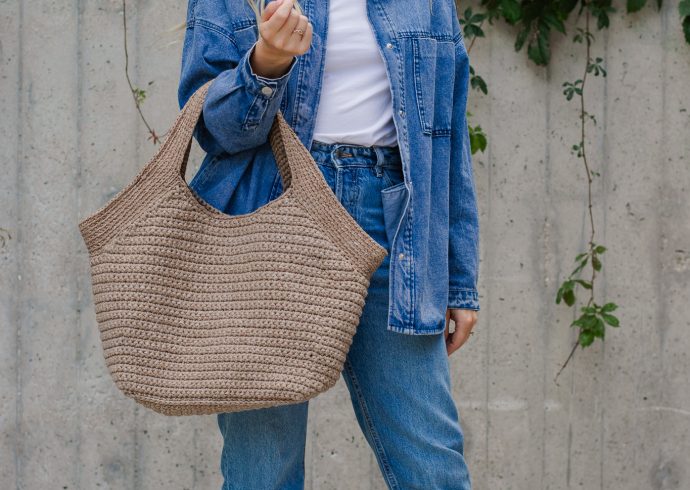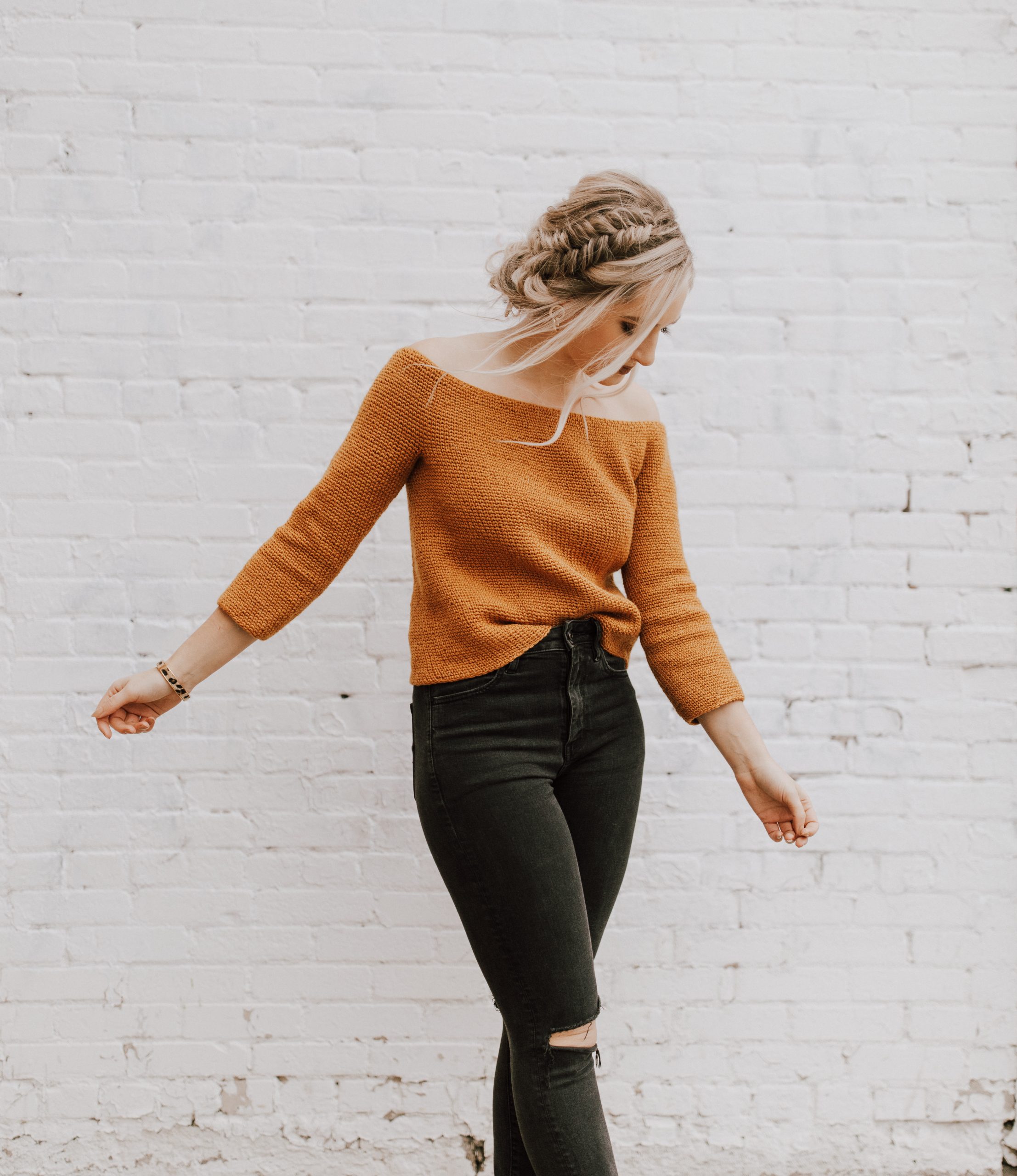
Amber Magic – Crochet Pattern for Off-The-Shoulder Circular Yoke Sweater (from my book: Modern Crochet Sweaters)
Hi all!
This post includes everything you need to know about the Amber Magic Sweater, a size-inclusive crochet pattern for a delicate, off-the-shoulder, circular yoke sweater worked seamlessly from the top-down.
The Amber Magic Sweater is from my book Modern Crochet Sweaters: 20 Chic Designs for Everyday Wear. This book includes 20 size-inclusive sweater patterns using a variety of techniques and construction methods to ensure there is something of value for every skill level. Each pattern is written in 9 sizes from XS to 5XL and each size has been thoroughly tested! We had over 500+ crochet pattern testers for this book to make sure that each size fits its intended wearer in a way that makes them feel beautiful. You can buy this book with confidence, knowing that each pattern was written for you and your unique body measurements.
Before we begin, here are some quick links for you:
- Find the PDF version on Ravelry here, on Etsy here, and on my website here.
- Add your finished project and view other completed projects on Ravelry here.
- Use the pattern hashtag #AmberMagicSweater on Instagram to show off your makes! Be sure to check out the book hashtag, #ModernCrochetSweaters, too!
- Shop the recommended yarn, WeCrochet Gloss Fingering here! (Be sure to scroll down to see other great yarn substitutes!)
- Shop my book on Amazon (US) here.
- Shop my book on Amazon (CA) here.
- Shop my book on other platforms outside of North America here.
- Read about my experience getting a book deal here!
- For any questions about this pattern, please email knitsnknotswpg@gmail.com and I’ll get back to you asap!
Order my book – Modern Crochet Sweaters: 20 Chic Designs for Everyday Wear – here!
If you want to be notified of all new pattern releases (and get exclusive discounts on all new paid patterns), sign up below!
This post contains affiliate links. This means, should you make a purchase, I will receive a small portion of the sale at no extra cost to you. All opinions are my own. View my Privacy + Disclosures Policy here.
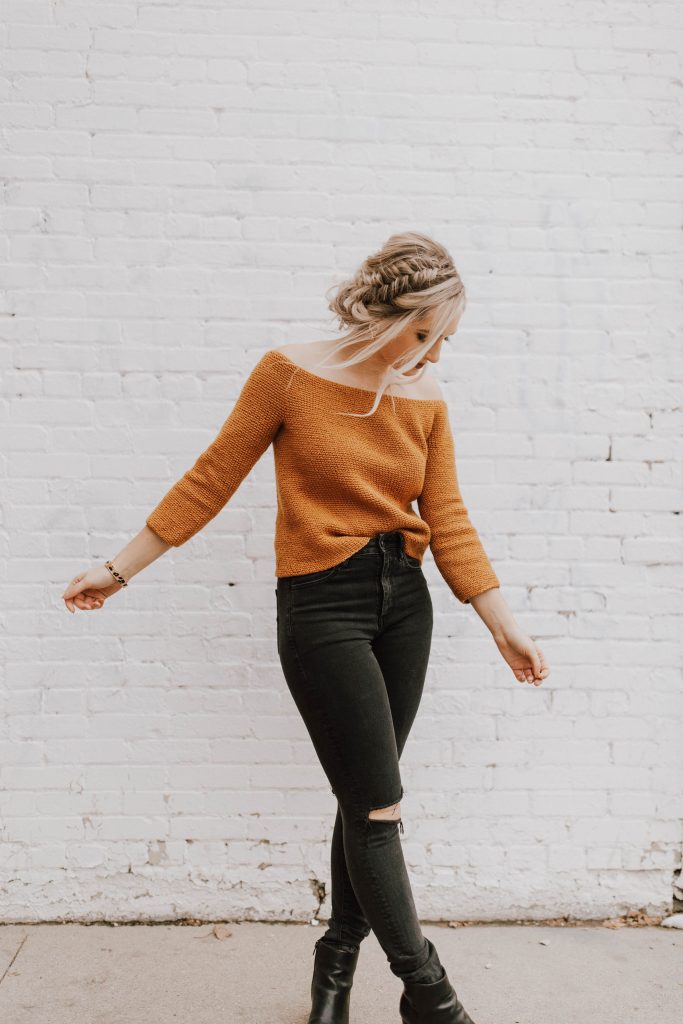
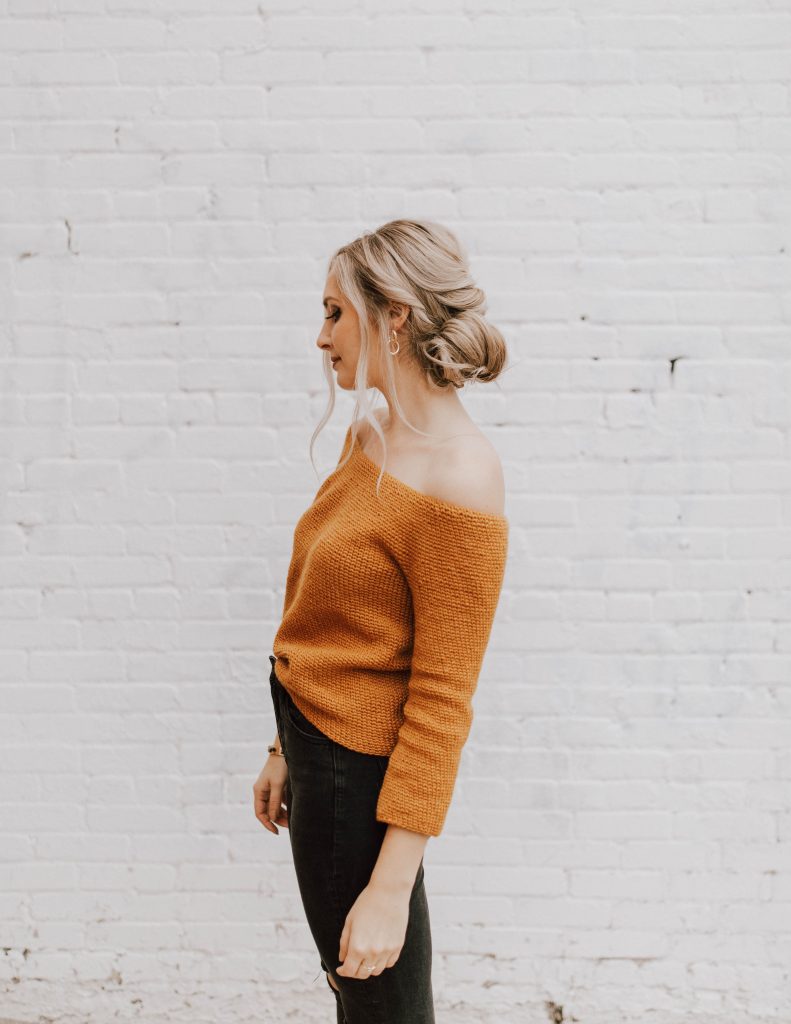
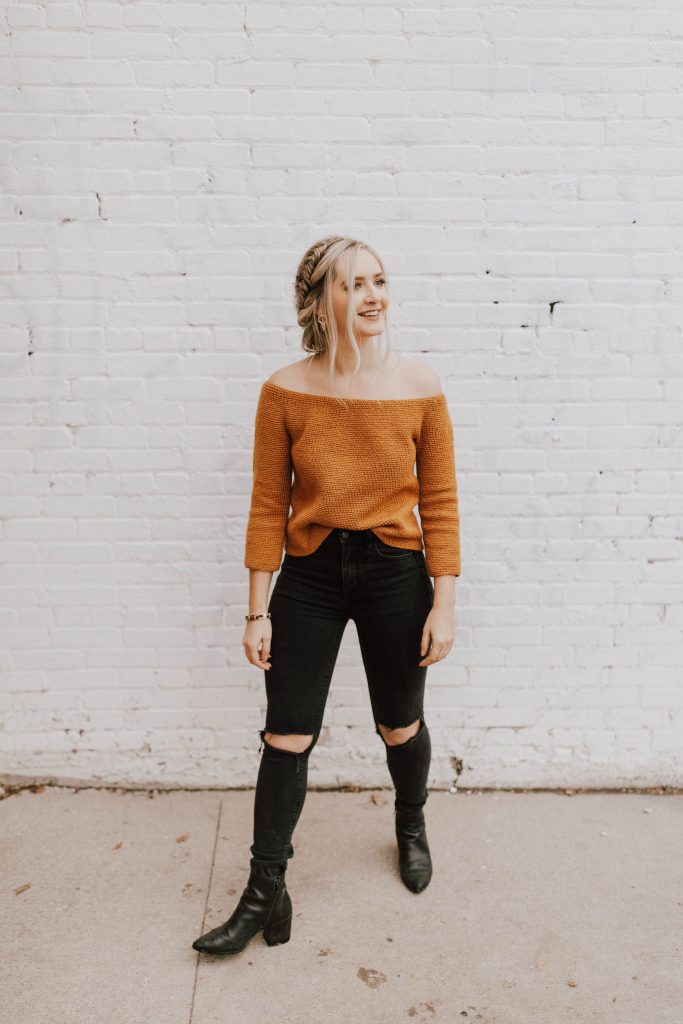

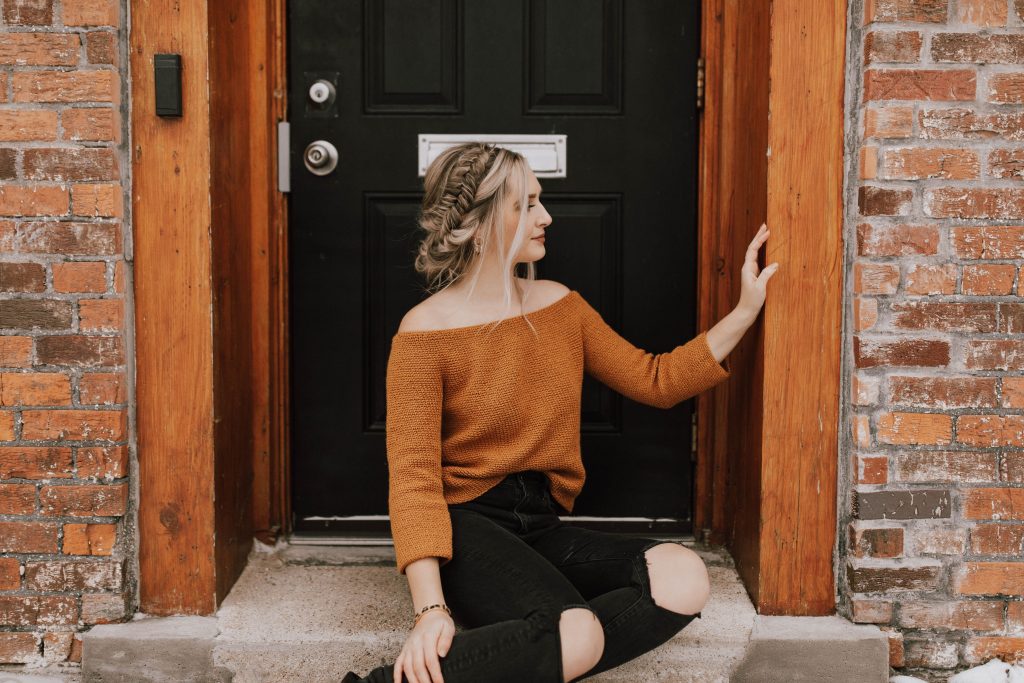
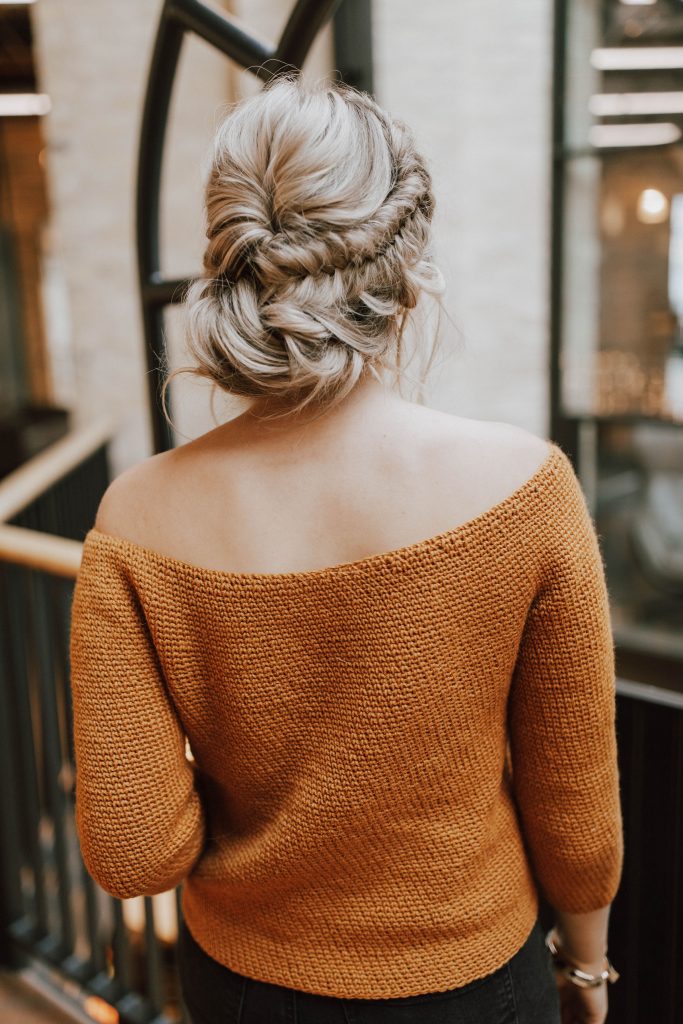
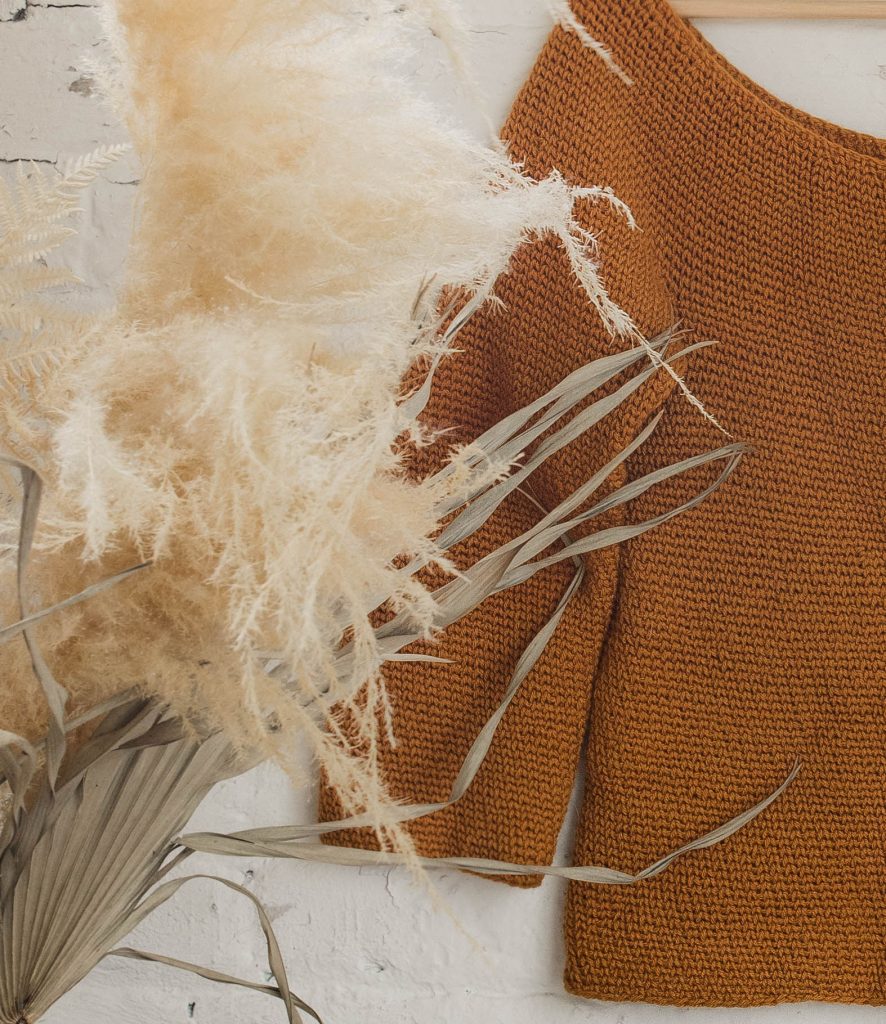
About Amber Magic
A lightweight, more poised version of the Sugarplum Off-the-Shoulder Yoke (found here), Amber Magic is crocheted with an identical construction using a luxurious fingering weight yarn. Demonstrating how yarn choice can totally transform a design, I wanted to include both a bulky weight and fingering weight version of this sweater in the book, each one producing a completely unique fabric to mix with different outfits, suitable for different occasions. This delicate, airy version offers an entirely different drape and sophistication despite sharing an identical construction.
Equally playful and poised, this off-the-shoulder piece was designed with a stretch-less neckline so you can wear it with confidence knowing it won’t slip off your shoulders. Keep it centered to expose both shoulders or shift it off one shoulder to flaunt a tasteful, slouchy look. The three-quarter-length sleeves are fitted in the upper arm and transition to a more relaxed fit. I recommend wearing this sweater on its own with a strapless bra or wear this piece over a tank top or dress for a peek-a-boo, layered effect.
Getting Started: Knowing Your Measurements
This book uses the Craft Yarn Council (CYC) to determine sizing. The CYC is the industry standard when it comes to knit and crochet sizing. While you will be able to produce a beautiful sweater by following the written patterns, I also like to include customization tips throughout each pattern so that you can adjust based on your unique body measurements. For example, shortening or lengthening a sleeve, or adjusting for a larger upper arm than written for your size. This way, you can modify the pattern with confidence, if needed. For me personally, I usually need to shorten garments because I have a short torso. My hips also fall under a different size than my bust – not everyone fits perfectly into these sizing standards; they are simply averages, not set-in-stone numbers.
Understanding how your body deviates from the CYC standard measurements gives you the ability to tailor a sweater to perfectly fit you, rather than feel disappointed that your body doesn’t fit into the sizing standards. I recommend that you measure the largest part of your bust and then refer to the CYC website (click here) to find out which size you would fall under. Then, look at the other measurements that are included for your size, and see which of these measurements deviate from your actual body measurements. Knowledge is power, and once you understand how your body deviates from the CYC standards, you will be able to anticipate this deviation and assume it translates through most patterns. For example, if your upper arm circumference is slightly larger than the CYC sizing chart reads, then you can expect you may have to ignore a few decrease rows when working the sleeves of your next sweater, or even follow the sleeve instructions for the next size up, if possible.
Getting Started: the Amber Magic Sweater
Yarn: Fingering—WeCrochet Gloss Fingering in Harvest
- 70% Merino wool, 30% silk
- 220 yds [200 m] per 1.8-oz [50-g] hank
- Find this yarn on crochet.com or visit yarnsub.com to find comparable substitutes.
Yardage: 7 (8, 8, 9, 9) (10, 11, 12, 13) hanks of Gloss Fingering, or
1275 (1425, 1600, 1775, 2025) (2250, 2350, 2725, 2825) yds
1166 (1304, 1463, 1623, 1852) (2058, 2149, 2492, 2584) m
Note: Yardage is for a slightly cropped sweater and three-quarter-length sleeves as shown in the sample and the sizing chart. Additional yardage will be needed if you would like a full-length sweater or longer sleeves.
Substitute Gloss Fingering with any similar fingering weight, category #1 yarn that matches gauge. Any fiber should work out fine, just be mindful of how much your chosen fiber grows upon blocking or washing.
Yarn Note: This design is comprised of center single crochet stitches throughout, encouraging you to get creative with your yarn choices. Simple stitches like this are great opportunities to use any special, unique yarns you may have on hand that you want to show off without getting lost in a distracting stitch pattern. Speckled, variegated, self-striping and hand-dyed yarns pair best with a blank canvas of simple stitches to really let the yarn shine.
Hook: Size U.S. G/6 (4 mm) or size needed to obtain gauge
Note: 4 mm hooks are sometimes labeled as F/5, and sometimes G/6.
Notions: Tapestry needle, five locking stitch markers
Gauge
4 x 4″ [10 x 10 cm] = 16 sts and 23 rows in center single crochet worked in the round
Correction (for the book only, not the PDF)
On page 155, Increase Round 2 instructions for All remaining sizes tells you to “sc in next 3 sts” when it should read as follows:
All rem sizes: *Inc in next st, csc in next 3 sts; rep from * to end of rnd.
Center Single Crochet (CSC) Tutorial
The center single crochet stitch is worked the same way as a regular single crochet stitch—the only difference is the placement of your hook. Insert your hook in between the two posts of your designated stitch, rather than underneath the front and back loops of the stitch. The stitch pattern created from this unique hook placement creates the appearance of stacked V’s that resemble the look of knitting.
If you’re having trouble, try pulling your loop up a little higher than you normally would before working your final yarn-over (see middle photo) to make it a little easier for you to work into this stitch on the following round.
Tip: You may want to practice the csc before beginning your sweater. Try working this stitch with a larger hook and a heavier yarn weight until you are comfortable with the csc stitch.

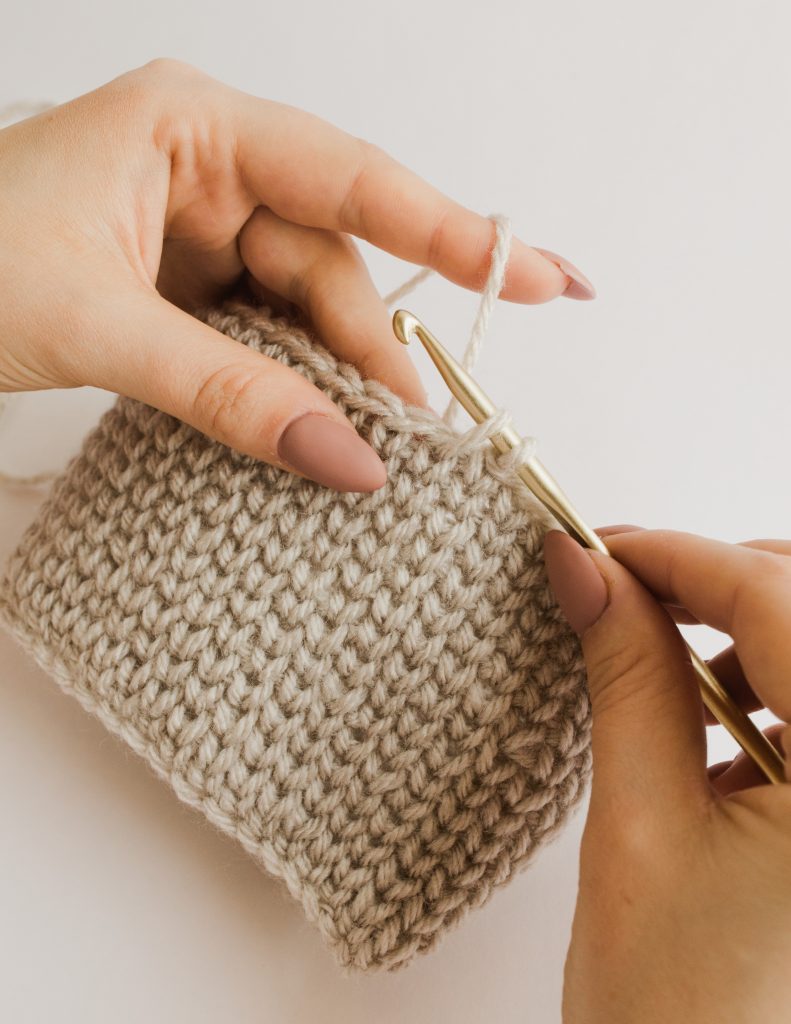
Customization Ideas + Tips When Crocheting This Sweater
Tips
- Sizing: This sweater is written in nine sizes as follows: XS (S, M, L, XL) (2X, 3X, 4X, 5X). Make sure to follow the numbers for your size only.
- An “x” indicates the instruction is not applicable to your size.
- Stitch Counts: Stitch counts are listed after each rnd. If no stitch count is given, there has been no change since the previous rnd. If only one number is provided, it applies to all sizes.
- Right Side: The “right side” is the side of your work that faces you as you are crocheting it.
- Construction: This sweater has a circular yoke construction, worked seamlessly from the top down. After completing the yoke increases, the yoke is then separated to create space for the body and the sleeves. The body is worked next, and the sleeves are worked last.
- CSC help: See the section explained above (or page 5 of the PDF pattern or page 179 of the book) for a photo tutorial on how to work the CSC stitch!
- Note: The first few rounds are more difficult to find the proper stitch placement. Once you have a few rounds worked, you will find your rhythm and it will become much easier! Keep your tension loose.
- Note: The first few rounds are more difficult to find the proper stitch placement. Once you have a few rounds worked, you will find your rhythm and it will become much easier! Keep your tension loose.
- Yarn Choice: This design is comprised of center single crochet stitches throughout, encouraging you to get creative with your yarn choices. Simple stitches like this are great opportunities to use any special, unique yarns you may have on hand that you want to show off without getting lost in a distracting stitch pattern. Speckled, variegated, self-striping and hand-dyed yarns pair best with a blank canvas of simple stitches to really let the yarn shine.
- Hook Size: This pattern requires a 4mm hook, and 4 mm hooks are sometimes labeled as F/5, and sometimes G/6.
- Yardage: The yardage listed is for a slightly cropped sweater and three-quarter-length sleeves as shown in the sample and the sizing chart. Additional yardage will be needed if you would like a full-length sweater or longer sleeves.
- BOR marker: Because you are working in a spiral, your BOR marker will gradually drift off-center. Simply replace it in the approximate center st as often as needed, using the tail from your beginning chain as a reference point. This does not affect your stitch count, you are just moving your BOR marker back to the center-back.
Customization Ideas
- Adjusting the Yoke Depth: Refer to yoke depth measurement in sizing chart in the book (page 4 of the PDF pattern). You may want to try your sweater on periodically to see where the finished yoke would lay on your body. If it seems too deep for you (or not deep enough), you can eliminate non-increase rnds (or add more) before separating the yoke as you see fit.
- Adjusting Sleeve length: The sleeves of this sweater are designed to be three-quarter-length. For full-length sleeves, continue working csc in all sts until desired sleeve length. You may choose to continue your decrease pattern (decreasing every sixth row or so) to create a fitted wrist. Try your sweater on as you work your sleeves to ensure you achieve your desired circumference and length. Keep note of any alterations you make to your first sleeve so that you can easily alter the second sleeve to match.
- Adjusting Sleeve Tightness: For tighter (or looser) sleeves, work additional (or fewer) decrease rounds than instructed for your size. Keep note of any alterations you make to your first sleeve so that you can easily alter the second sleeve to match.
- For a Color-Blocked Sweater: Simply work your sweater in your top colour until you are ready to switch to a new one. You may want to change colours on the side of your sweater rather than the center front or back, just to keep the color-jog as inconspicuous as possible. When finishing the round with your new colour, you will notice a distinct colour jog, but don’t worry about this – when you tie your ends, pull tight until the jog is nearly invisible, then tie a knot and weave in these ends.
- For Bell Sleeves: Try following the decreases as instructed for your size until your sweater is snug against your arm, then continue crocheting additional length while also increasing each round by working 2 csc into a stitch rather than decreasing! Work as many times as desired.
- Collar: Try adding a collar by single crocheting around the perimeter of the neckline until reaching your beginning stitch, then continue working in a spiral in the csc stitch while also increasing every few stitches for a loose and flowy collar.
- Ribbed Hemline and Sleeve Cuffs: To add ribbing, work your csc sleeves or body until you have reached your desired length before ribbing. Then, work a chain that equals the length of your desired ribbing. Skip the first ch, and yoslst into each ch across until reaching your last csc round, and sl st into the next available stitch to join this ribbing to your work. Turn your work to begin crocheting back on this row you just completed. Skip over the sl st, and yoslst into the back loops of each st across until reaching the end of the row, turn. Ch 1, yoslst into each st across until reaching your last csc round, sl st into the next available stitch to join this ribbing to your work. Repeat the last two rows all the way around the circumference of your work, then fasten off, leaving a tail long enough to seam your first and last rows of ribbing together. Use a tapestry needle to whip stitch these rows together and weave in all ends.
- yoslst: yarn over slip stitch – Yarn over, insert hook into designated st, yarn over, draw loop through stitch and immediately through both loops on hook.
- To add straps: Use 2 stitch markers to mark out your desired placement of each strap; 8 markers total. Join yarn with a sl st to one of your marked sts on the front of your sweater and sc across the width of your strap to the second marked stitch. This row equals the width of your strap. Continue working rows of single crochet until reaching your desired length, then fasten off and seam to the corresponding placement on the back of your sweater with a tapestry needle using the whip stitch or desired seaming method. (Try on your sweater before fastening off to be sure you are satisfied with the strap lengths.) Repeat for second strap.
Yarn Substitutions
The yarn used in my sample is a 70% Merino wool, 30% silk blend. Substitute Gloss Fingering with any similar fingering weight, category #1 yarn that matches gauge. Most fibers should work out fine, just be mindful of how much your chosen fiber grows upon blocking or washing. Choose a fiber that produces a drape you are happy with when considering your yarn choices.
The following yarns can be used in this pattern and will produce a lovely finished sweater:
Knit Picks/WeCrochet Yarns:
- Knit Picks/WeCrochet CotLin
- Knit Picks/WeCrochet Comfy Fingering
- Knit Picks/WeCrochet Felici
- Knit Picks/WeCrochet Gloss
- Knit Picks/WeCrochet Hawthorne
- Knit Picks/WeCrochet Lindy Chain
- Knit Picks/WeCrochet Muse Hand Painted
- Knit Picks/WeCrochet Palette (very affordable wool option)
- Knit Picks/WeCrochet Stroll
- Stroll Effects (previously called Stroll Tonal)
- Stroll Tweed
- Knit Picks/WeCrochet Twill
LoveCrafts Yarns:
- Cascade 220 Fingering
- Cascade Heritage Solids
- Koigu Premium Merino
- Malabrigo Mechita
- Malabrigo Sock
- Schachenmayr Merino Extrafine 170
- Valley Yarns Huntington
Other Yarns:
- Loops & Threads Woolike (Michael’s Brand)
- Fuzzy What Knots
-
Sewrella Classic Sock (100% superwash merino)
- Loopy Luna Fibers Fingering Weight
- Hobbii Twister
- Yarn Bee Hand Dyed Tonal
Pattern Tester Photos
There were 500+ pattern testers for this book because I wanted to ensure all sizes are satisfied with the pattern and fit! Below you can see photos from the testing process to see how the sweater looks on different bodies with different modifications made using a variety of yarns.
Note: Below I have posted all the photos I have received. If you tested this sweater and your photos aren’t in this section, please re-send them to me so I can include you! 🙂
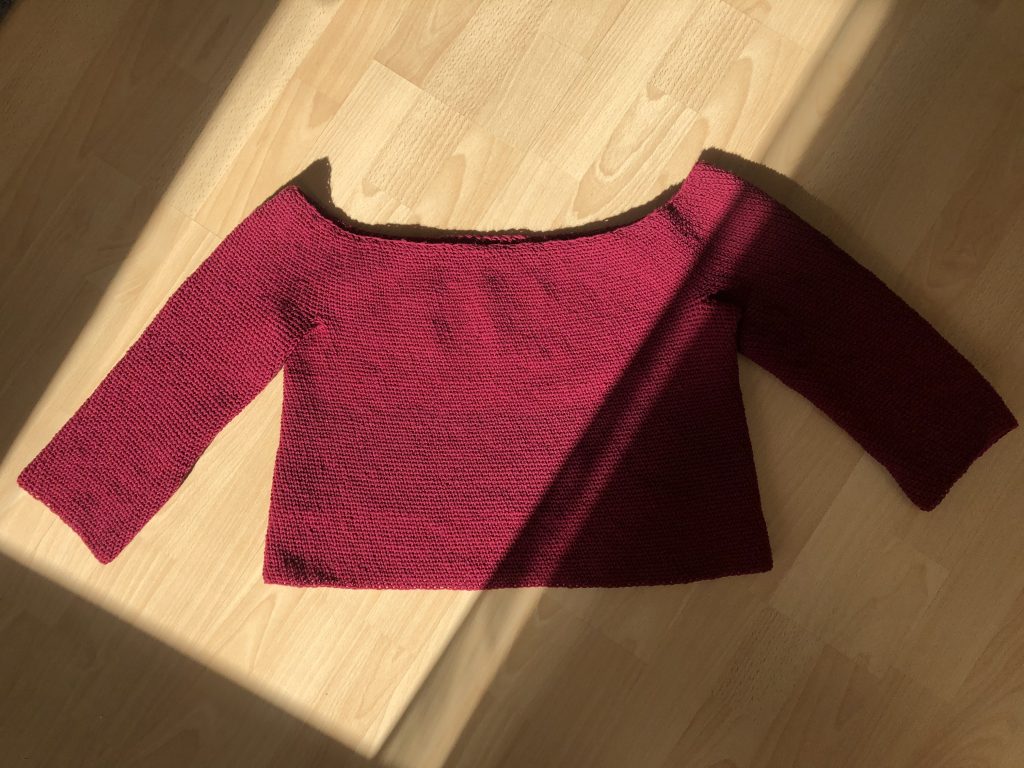



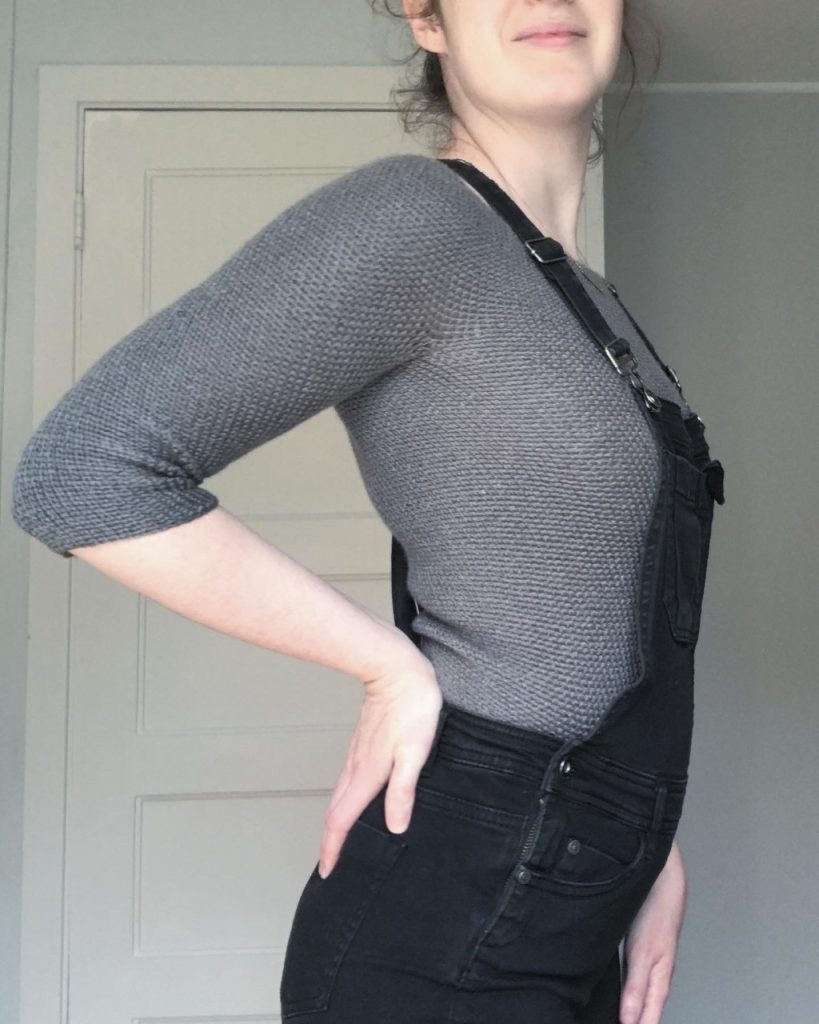
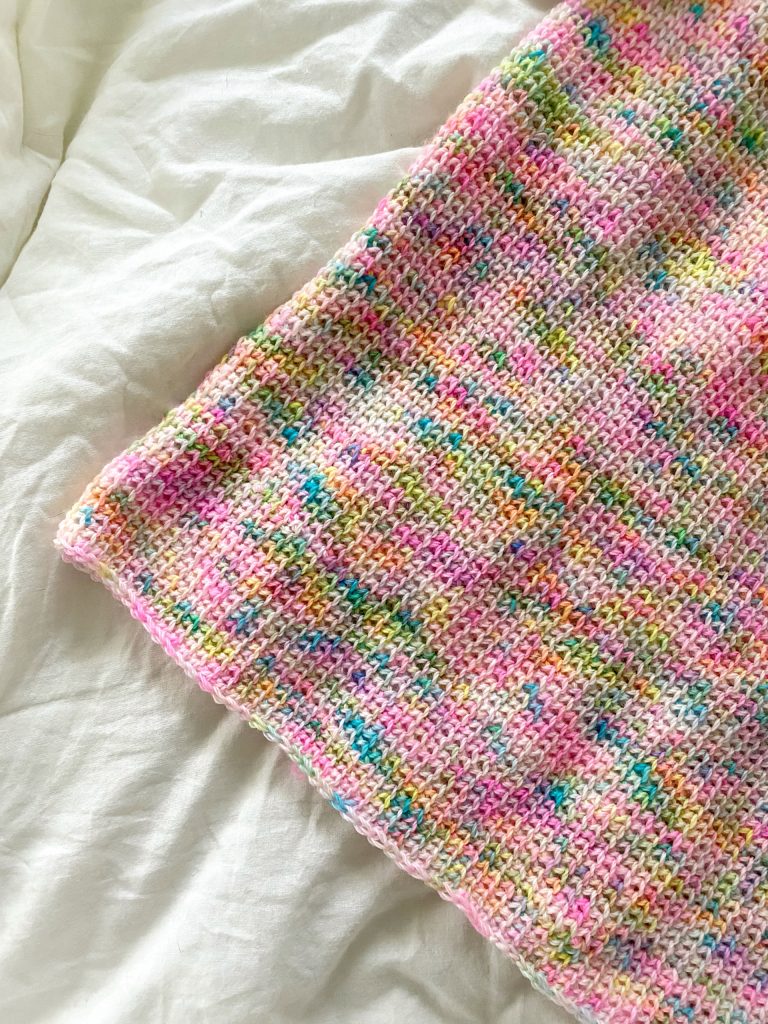
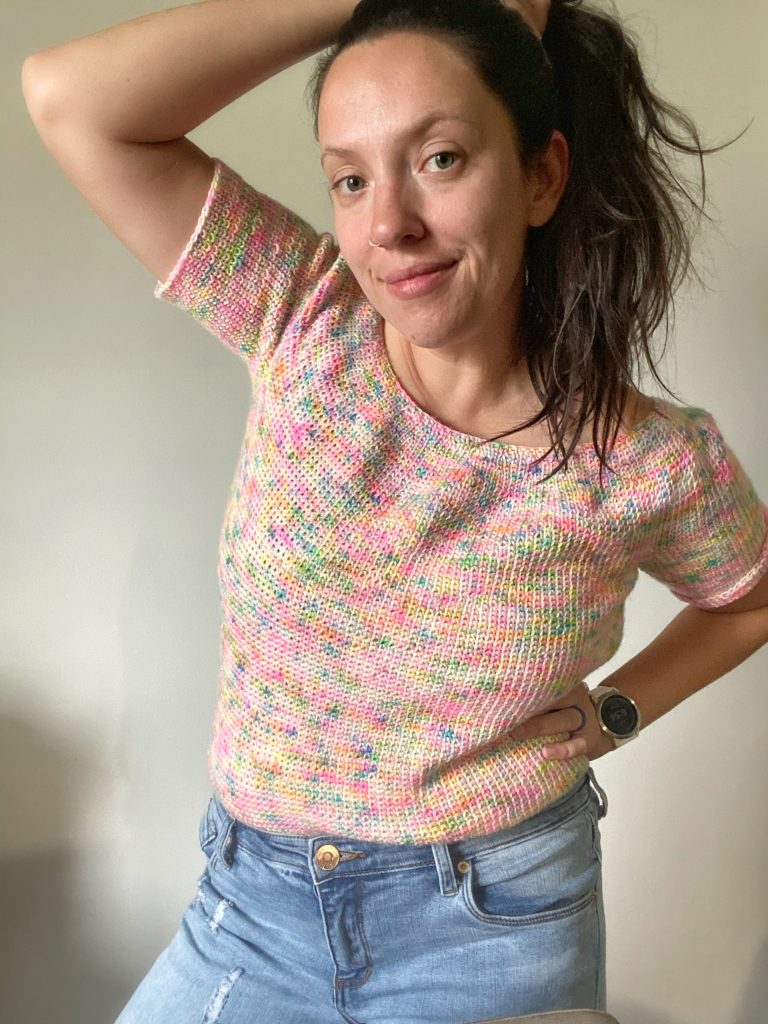

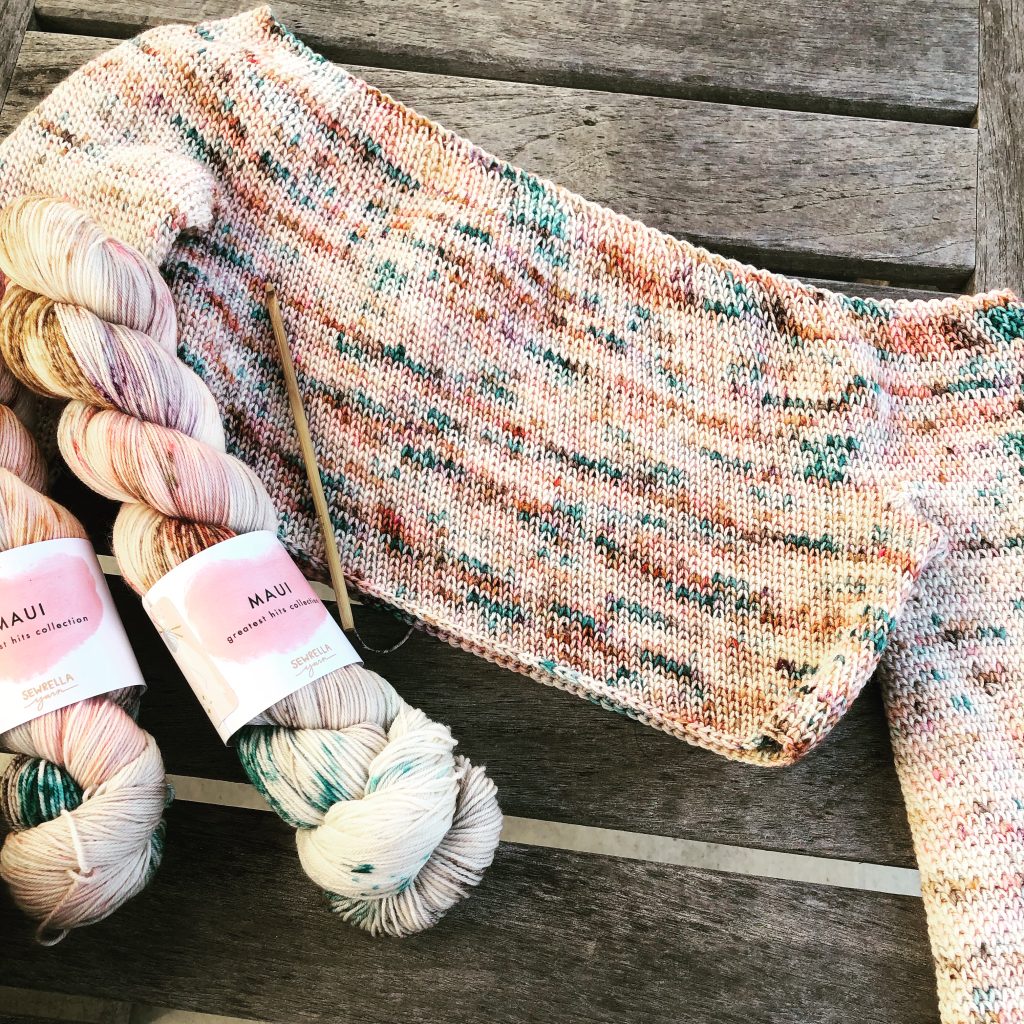
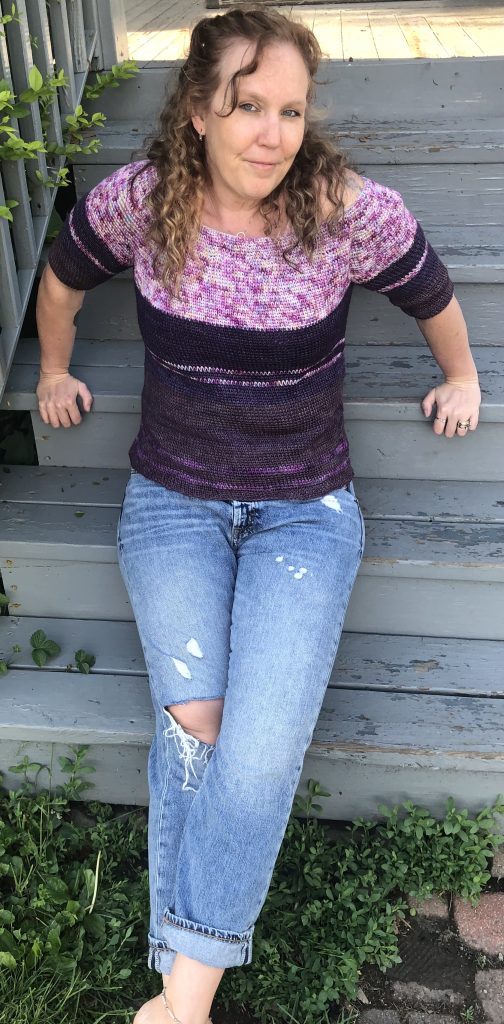
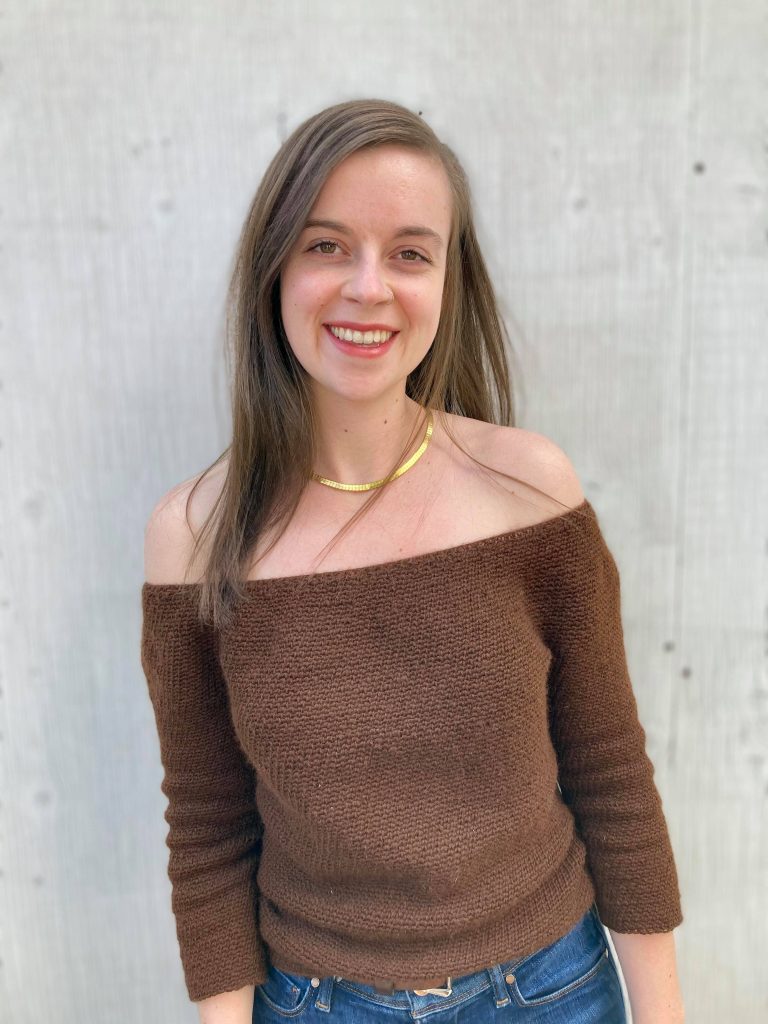
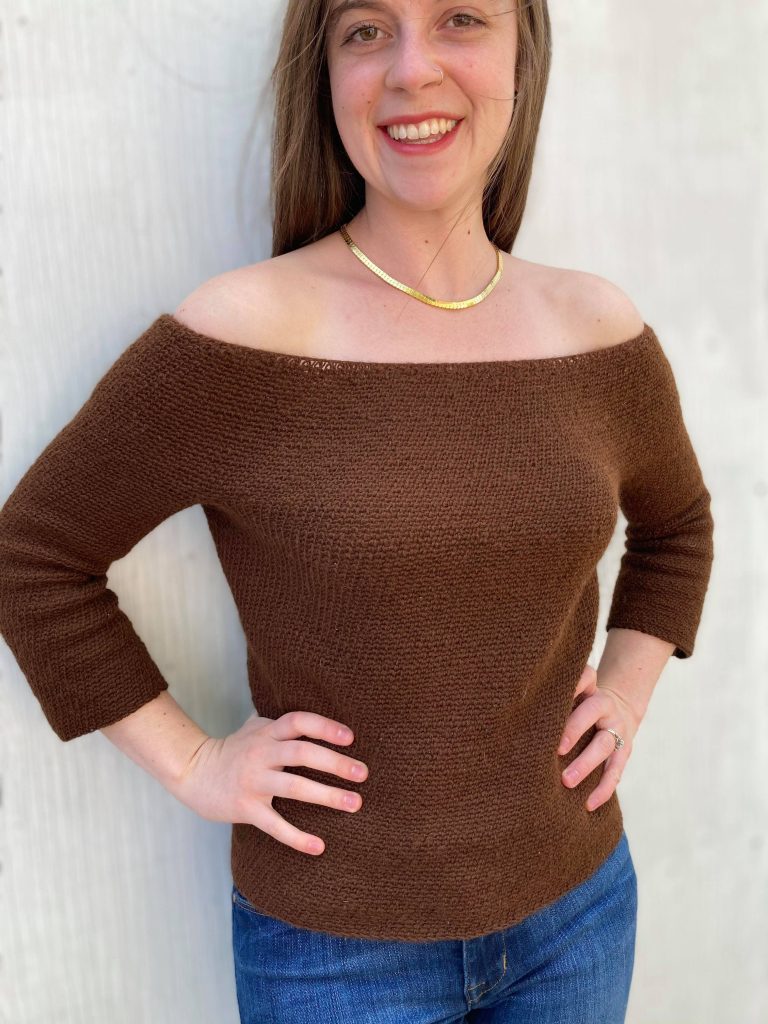

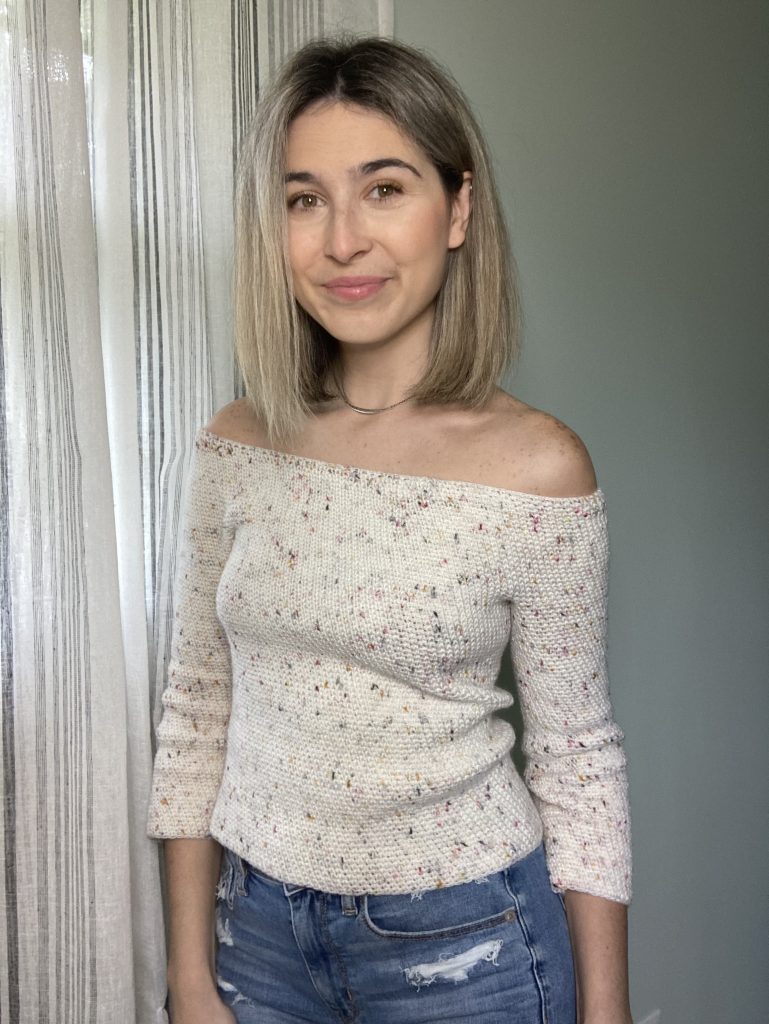
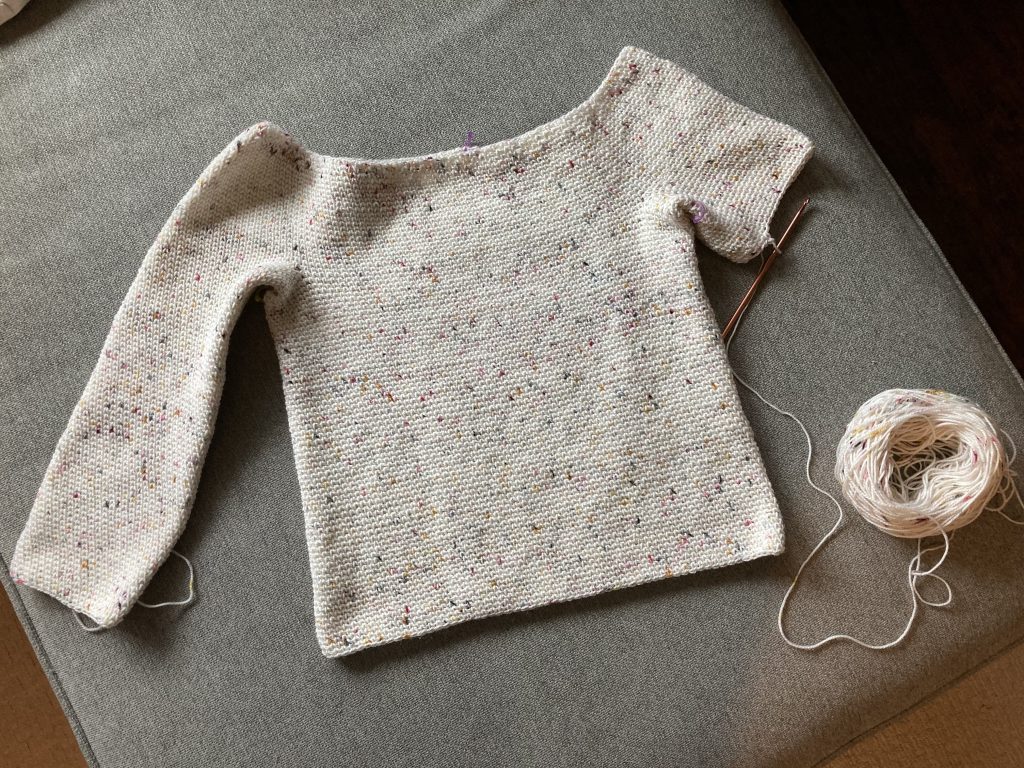

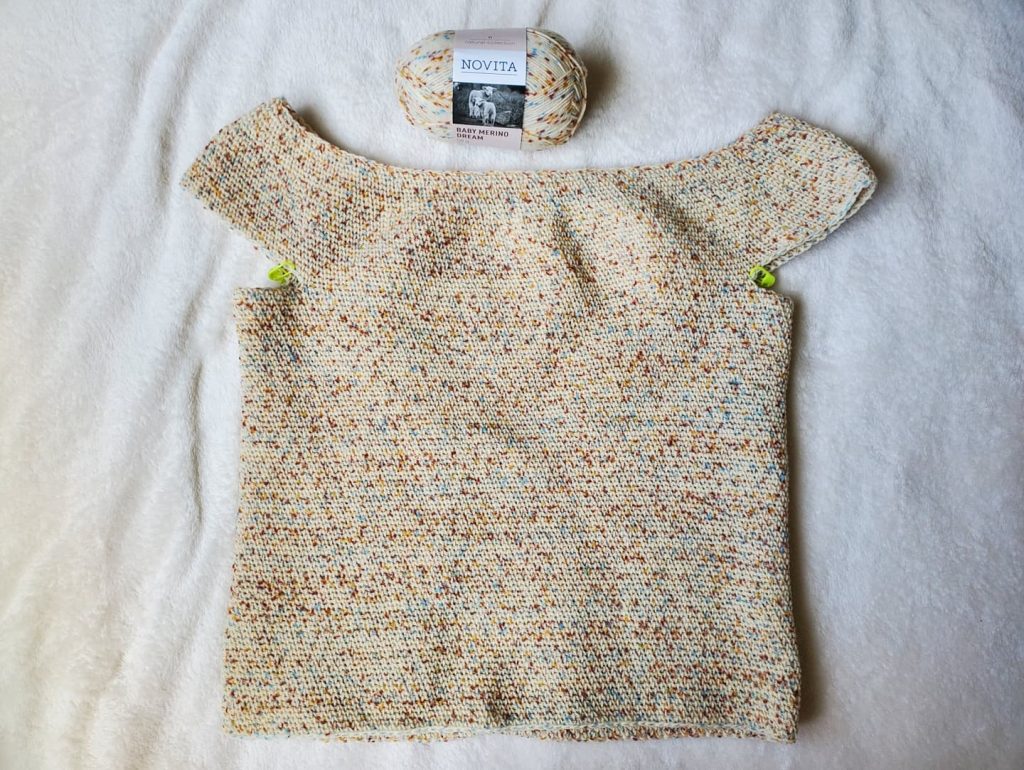

#ModernCrochetSweaters
#AmberMagicSweater
Thanks so much for reading!
You can find my full print book, Modern Crochet Sweaters: 20 Chic Designs For Everyday Wear on the shelves of all major retailers or see purchasing options here!
To shop this Amber Magic Sweater crochet pattern, find it on Ravelry, Etsy, or my website!
Shop the recommended yarn, WeCrochet Gloss Fingering, here.
x
Janine
For exclusive discounts on all new patterns, join the Knits ‘N Knots newsletter list here!


